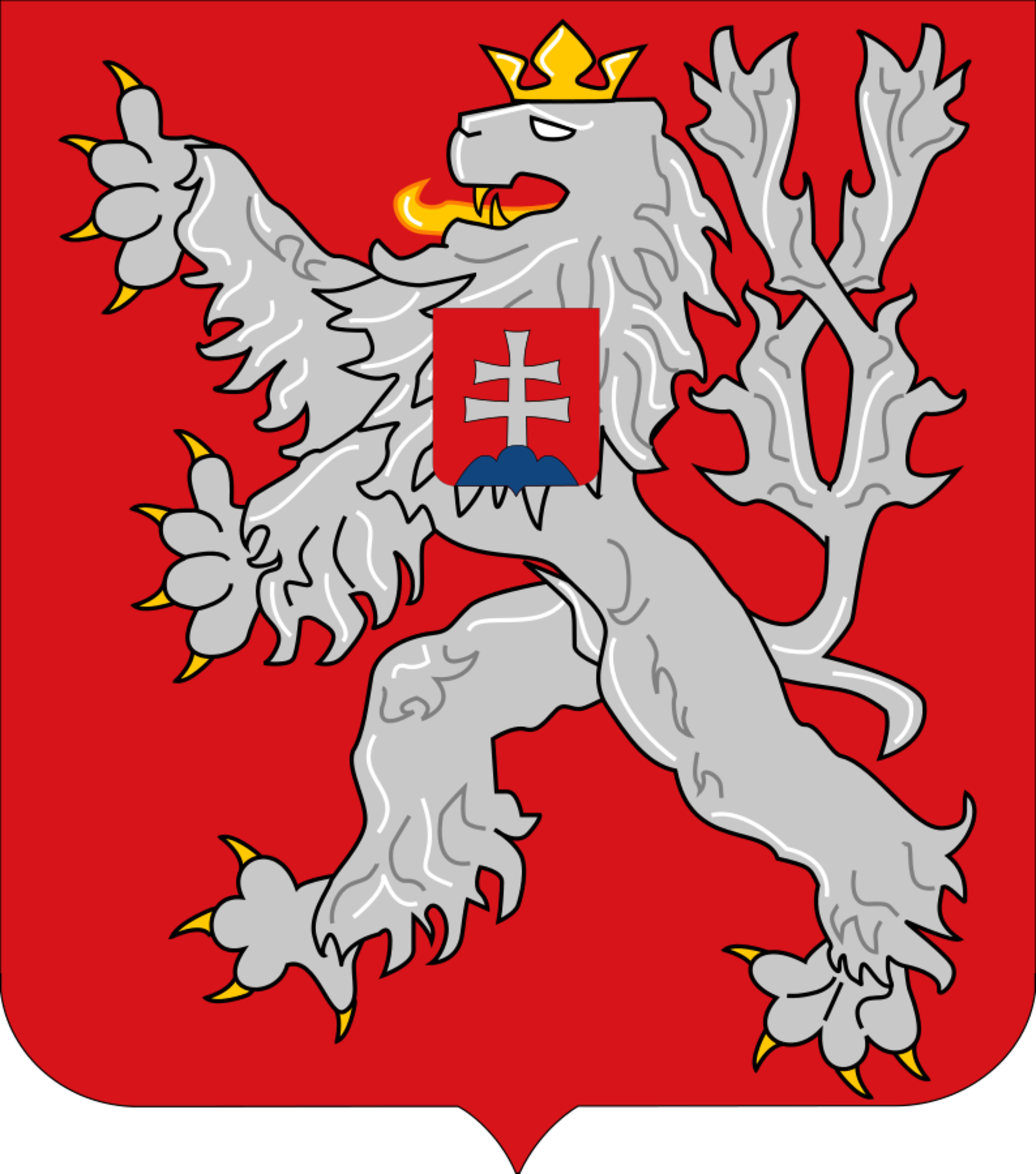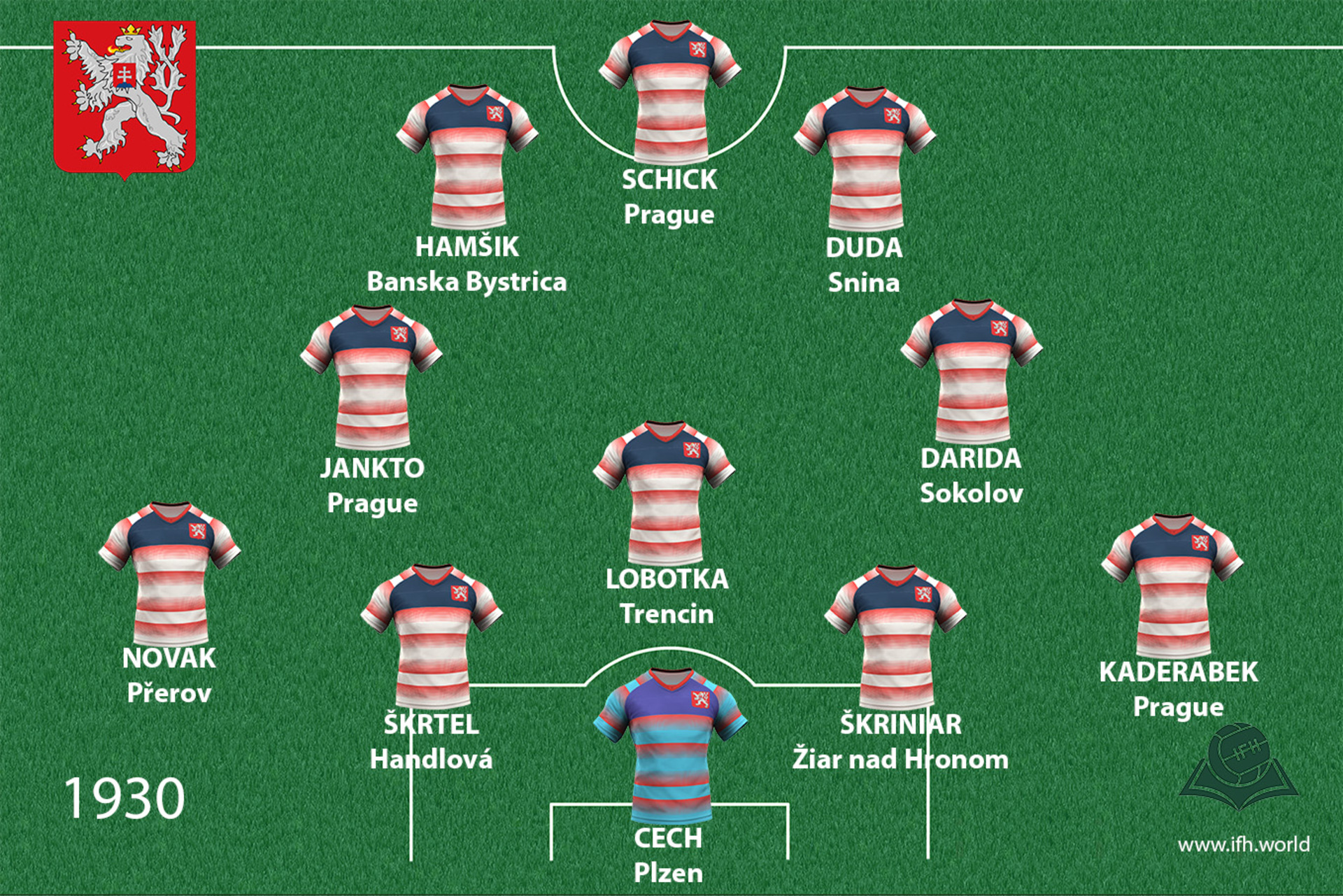Republic of Czechoslovakia
The newly formed Czechoslovakia was given independence in 1918 by the Allied victory, while the French and their capital helped them after that. In the vision of the western European capitalist forces, it was supposed to represent one of the barriers against socialist revolution from Russia, but for France it was also a preventive guarantee against German aggression.

Coat of arms
Shirt
| Position | First name | Last name | Mjesto rođenja | Like | Dislike | |
|---|---|---|---|---|---|---|
| GK | Lukas | HRADECKY | Bratislava |
15 |
6 |
|
| GK | Petr | CECH | Plzeň |
10 |
0 |
|
| GK | Tomas | VACLIK | Ostrava |
0 |
2 |
|
| DC | Jakub | BRABEC | Prague |
0 |
1 |
|
| DC | Marek | SUCHY | Prague |
0 |
1 |
|
| DC | Martin | ŠKRTEL | Handlová |
32 |
10 |
|
| DC | Milan | ŠKRINIAR | Žiar nad Hronom |
41 |
6 |
|
| DLC | Michal | KADLEC | Vyškov |
1 |
2 |
|
| DRLC | Tomas | KALAŠ | Olomouc |
5 |
1 |
|
| DRLC | Tomas | HUBOCAN | Žilina |
4 |
3 |
|
| DRL | Theodor | GEBRE SELASSIE | Třebíč |
7 |
1 |
|
| DR/MR | Pavel | KADERABEK | Prague |
1 |
0 |
|
| DLC/ML | Filip | NOVAK | Přerov |
1 |
2 |
|
| DMC | Vladimir | DARIDA | Sokolov |
1 |
0 |
|
| MC | Jakub | JANKTO | Prague |
1 |
0 |
|
| MC | Stanislav | LOBOTKA | Trenčín |
10 |
6 |
|
| MRC | Matus | BERO | Ilava |
2 |
4 |
|
| AMC | Borek | DOCKAL | Městec Králové |
1 |
0 |
|
| AMC | Laszlo | BENEŠ | Dunajská Streda |
6 |
3 |
|
| AMC/SS | Marek | HAMŠIK | Banská Bystrica |
39 |
5 |
|
| AMC/SS | Ondrej | DUDA | Snina |
6 |
1 |
|
| AMRLC | Ladislav | KREJCI | Prague |
1 |
0 |
|
| MRL | Jaromir | ZMRHAL | Žatec |
1 |
0 |
|
| AMRL | Miroslav | STOCH | Nitra |
3 |
2 |
|
| AMRL | Robert | MAK | Bratislava |
6 |
2 |
|
| AMRL | Vladimir | WEISS | Bratislava |
8 |
2 |
|
| FRLC | Matej | VYDRA | Chotěboř |
0 |
1 |
|
| FC | Patrik | SCHICK | Prague |
6 |
4 |
|
| FC | Tomas | NECID | Pelhrimov |
0 |
1 |
Parliamentary democracy was advancing in Czechoslovakia, the industry was developing, literacy was on the increase, etc. The minority issue, however, would cause great conflicts. The Republic was formally a country of Czechs and Slovaks, while in reality the Slovak issue was treated as a minority issue. Along them came other numerous minorities like the Germans from Sudetenland who had been living there for centuries, who were called “immigrants” by president Tomáš Masaryk (ruled 1918-1935), the Polish and Hungarians. In total, these four peoples constituted 50% of Czechoslovakia. The Catholic Church lost its leading position in public life because of its clash with Hussitism (religious movement by Jan Hus in the 15th century), whose “famous past” the Czech were reminiscing in the 19th century, but mostly because of their close ties to the Habsburg dynasty.
Despite finding themselves in a common country, the Czech were more associated to the West throughout history, and the modern Czech nation was constructed through conflict with the Germans and imposition of German culture and political supremacy. Slovaks, on the other hand, had Hungarians and their politics as “the Others” to help form the Slovak identity. Moreover, there was never a Slovak medieval country (even though Slovak romanticists tend to present Moravia – see European championship 868), while its territory was, until 1918, called Upper Hungary. A schism was inevitable and would happen by the end of the thirties, when Hitler occupied Czechia and enabled Slovakia as a country under German protectorate.
Sources
- Felipe FERNANDEZ-ARMESTO, Narodi Europe, Zagreb, 1997.
- Grupa autora, Povijest: Prvi svjetski rat i poslijeratno doba (1914. - 1936.) , knjiga XVI., Zagreb 2008.
- Božena VRANJEŠ-ŠOLJAN, ''T. G. Masaryk i nova Europa nakon Prvoga svjetskog rata'', Radovi Zavoda za hrvatsku povijest, 37/2005.
- Alan John Percivale TAYLOR, Uzroci Drugog svjetskog rata, Zagreb, 1994.
- Grb: https://en.wikipedia.org/wiki/Coat_of_arms_of_Czechoslovakia
